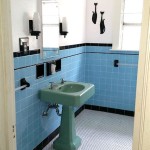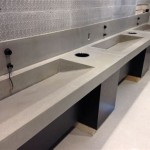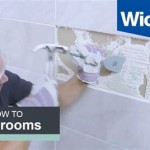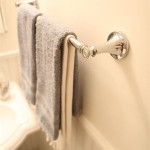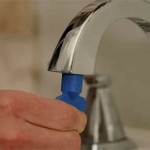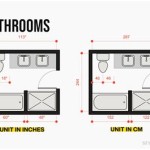Bathroom Vanity Contact Paper: A Comprehensive Guide
Bathroom vanities, integral components of bathroom design, often bear the brunt of daily use, leading to wear and tear over time. Replacing a vanity can be a significant expense and undertaking. Contact paper, also known as self-adhesive film or vinyl wrap, presents a cost-effective and relatively simple alternative for updating and revitalizing these surfaces. This article provides a detailed overview of bathroom vanity contact paper, covering its properties, application techniques, advantages, disadvantages, and maintenance considerations.
Contact paper is essentially a decorative film backed with an adhesive. It adheres to surfaces through pressure application, creating a new, often waterproof or water-resistant, layer. Available in a wide array of colors, patterns, and textures, including wood grain, marble, granite, and solid colors, contact paper provides numerous aesthetic options to match or enhance existing bathroom décor. The thickness and quality of contact paper can vary, influencing its durability and ease of application. Thicker varieties tend to be more resistant to tearing and stretching, while higher-quality adhesives provide a stronger and longer-lasting bond.
The primary appeal of using contact paper on bathroom vanities lies in its ability to transform the appearance of the vanity without the need for extensive renovation. It offers a quick and budget-friendly solution for concealing scratches, stains, and other imperfections. Furthermore, the ease of application allows for DIY projects, saving on professional installation costs. However, successful application and long-term performance depend on careful preparation, meticulous execution, and proper maintenance.
Key Point 1: Selecting the Right Contact Paper
Choosing the appropriate type of contact paper is crucial for achieving desired results. Several factors should be considered during the selection process. Firstly, the intended aesthetic should be clearly defined. This involves determining the desired color, pattern, and texture. Samples should be obtained to assess how the contact paper looks under bathroom lighting and alongside existing fixtures and surfaces. Secondly, the durability of the contact paper is paramount, especially in a high-moisture environment like a bathroom. Seek out contact papers specifically designed for use in bathrooms or kitchens, as these tend to be more water-resistant or waterproof and resistant to mildew. Thirdly, assess the adhesive strength. A strong adhesive is necessary to ensure the contact paper adheres firmly to the vanity surface and resists peeling or bubbling. However, an excessively strong adhesive may make repositioning the contact paper during application difficult.
Beyond these general considerations, the existing condition of the vanity also influences the selection process. For instance, if the vanity surface is heavily textured or uneven, a thicker, more flexible contact paper may be required to provide adequate coverage and adhesion. Conversely, a smoother surface may be suitable for thinner, more decorative contact papers. Finally, read reviews and compare products from different manufacturers to gauge their overall quality and user satisfaction. Look for contact papers with positive feedback regarding their ease of application, durability, and resistance to water damage.
Specific types of contact paper to consider include: solid color vinyl, offering a uniform and modern look; wood grain contact paper, mimicking the appearance of various wood species; marble and granite contact paper, providing a luxurious and sophisticated aesthetic; and textured contact paper, adding depth and visual interest to the vanity surface. Also, consider the finish, opting for matte, glossy, or satin depending on the desired sheen and aesthetic.
Key Point 2: Application Techniques for Optimal Results
Proper application is essential for ensuring the contact paper adheres correctly and presents a professional-looking finish. The following steps outline the recommended application process:
(a)
Preparation:
The vanity surface must be thoroughly cleaned and prepared. Remove any existing hardware, such as knobs and handles. Clean the surface with a degreasing cleaner to remove any dirt, grime, or residue. Rinse thoroughly with water and allow the surface to dry completely. If the vanity surface is damaged, such as with deep scratches or dents, fill these imperfections with wood filler or spackle and sand smooth before applying the contact paper. Sanding the existing surface lightly can also improve adhesion, especially for glossy surfaces. Remove any dust or debris created during sanding.(b)
Measurement and Cutting:
Accurately measure the dimensions of the vanity surfaces to be covered. Add a few extra inches (approximately 1-2 inches) to each dimension to allow for trimming and adjustments. Transfer these measurements to the back of the contact paper, using a ruler and pencil. Use a sharp utility knife or scissors to carefully cut the contact paper according to the marked lines. For complex shapes or corners, create paper templates to ensure accurate cutting. Consider cutting the contact paper into smaller, more manageable pieces for larger surfaces.(c)
Application:
Begin applying the contact paper from one edge or corner, gradually peeling away the backing paper while smoothing the contact paper onto the vanity surface. Use a smoothing tool, such as a plastic scraper or credit card wrapped in a soft cloth, to press the contact paper firmly against the surface, working from the center outwards. This helps to eliminate air bubbles and ensure a smooth, even application. Overlap adjacent pieces of contact paper slightly (approximately 1/8 inch) and carefully trim the excess with a utility knife and straight edge for a seamless appearance. Use a heat gun or hairdryer on a low setting to warm the contact paper, making it more pliable and easier to conform to curves and edges.(d)
Finishing:
Once the contact paper is applied, carefully trim any excess material around edges, corners, and hardware openings using a sharp utility knife. Reinstall the hardware, such as knobs and handles. Inspect the surface for any remaining air bubbles or imperfections. Use a pin or needle to puncture any air bubbles and then smooth the area with a smoothing tool. Allow the adhesive to cure for at least 24 hours before exposing the vanity to water or moisture.Following these steps meticulously helps ensure a successful and long-lasting application of contact paper on bathroom vanities. Patience and attention to detail are critical for achieving a professional-looking result.
Key Point 3: Advantages, Disadvantages, and Maintenance
While contact paper offers several benefits for updating bathroom vanities, it is important to acknowledge both its advantages and disadvantages. Its cost-effectiveness and ease of application are significant advantages, allowing for affordable and DIY-friendly vanity makeovers. The wide array of colors, patterns, and textures available provides numerous aesthetic options to suit various design preferences. Contact paper also provides a protective layer that can help shield the vanity surface from scratches, stains, and moisture. Furthermore, older contact paper can be removed without damaging the underlying surface if removed carefully, allowing for future design updates. This makes it a flexible and reversible decorating option.
However, contact paper also has limitations. Its durability is generally lower compared to traditional finishes like paint or varnish. Contact paper can be susceptible to tearing, scratching, and peeling, especially in high-traffic areas or in environments with frequent exposure to moisture. The adhesive can weaken over time, leading to bubbling or lifting of the contact paper. Additionally, contact paper may not adhere well to all surfaces, particularly those that are heavily textured or uneven. Improper application can result in visible seams, air bubbles, and a less-than-professional appearance. Finally, some lower-quality contact papers may fade or discolor over time when exposed to sunlight or harsh cleaning products.
Proper maintenance is crucial for extending the lifespan and preserving the appearance of contact paper on bathroom vanities. Regularly clean the surface with a mild soap and water solution, using a soft cloth or sponge. Avoid using abrasive cleaners, scouring pads, or harsh chemicals, as these can damage the contact paper. Wipe up spills immediately to prevent staining or discoloration. Avoid placing hot items directly on the contact paper, as this can cause it to warp or melt. Inspect the surface periodically for any signs of peeling or bubbling. If any peeling occurs, re-adhere the contact paper using a small amount of adhesive or by gently heating the area with a heat gun or hairdryer. Consider applying a sealant specifically designed for vinyl surfaces to further protect the contact paper from moisture and wear.
By understanding the properties of contact paper, employing meticulous application techniques, and adhering to proper maintenance practices, homeowners can effectively utilize this material to update and enhance the appearance of their bathroom vanities while extending their lifespan.

This Marble Contact Paper Will Make Furniture Look Waaaay More Expensive Than It Really Is

House Update Bathroom Vanity With Marble Contact Paper The Great Goodness

Transforming Bathroom Sink Diy With Marble Contact Paper

Diy Easy Bathroom Makeover Transformation Faux Marble Framed Mirror No Paint The Ann

How To Do A Sy Stunning Granite Contact Paper Countertop Makeover

Diy Easy Bathroom Makeover Transformation Faux Marble Framed Mirror No Paint The Ann

Easy Naptime Vanity Makeover

Diy Bathroom Makeover Contact Paper How To Tips

Diy Faux Marble Contact Paper Countertop Anika S Life Bathroom Vanity Makeover Trendy

Update A Vanity With Wallpaper
Related Posts
